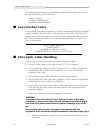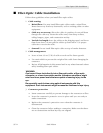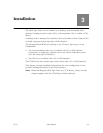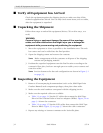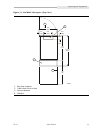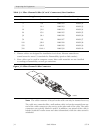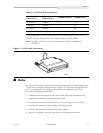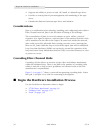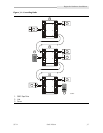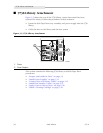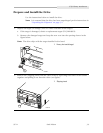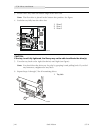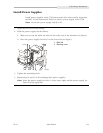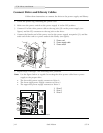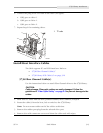
Begin the Hardware Installation
3-6 Sixth Edition 95741
• Supports the ability to power-on and -off, install, or deinstall tape drives
• Provides a central point of port management and monitoring of the tape
drives
• Extends the distances between tape drives and initiators
Considerations
Jitter is a consideration when selecting, installing, and configuring hubs within a
Fibre Channel network. Jitter is the deviation of timing of an exchange.
The accumulation of jitter occurs and continues to grow within a chain of
repeaters. As a signal is input to a repeater, jitter is not removed from the clock
and is transferred to the data at the output. At some level within the network,
jitter could exceed the allowable limit causing excessive errors. Assuring that
there are NL_Ports within the loop to reclock the signal, jitter will be minimized.
Loop Port State Machines (LPSM) are required to control the operation of the
loop and ensure Loop Initialization Protocol (LIP) is executed whenever a reset
or power-on occurs.
Cascading Fibre Channel Hubs
Cascading of hubs allows an increase of tape drive and initiator attachments
within the arbitrated loop. There is no limit to the number of cascading hubs
within a network as long as basic guidelines are followed (refer to the hub
manufacturer’s requirements).
Figure 3-4 on page 3-7 shows a network incorporating cascading hubs. Notice
that port 1 and port 4 are used for connecting hubs together.
■ Begin the Hardware Installation Process
Use the list below to determine where to begin:
• “9738 Library Attachment” on page 3-8
• “Desktop Units” on page 3-19
• “Rack” on page 3-26



